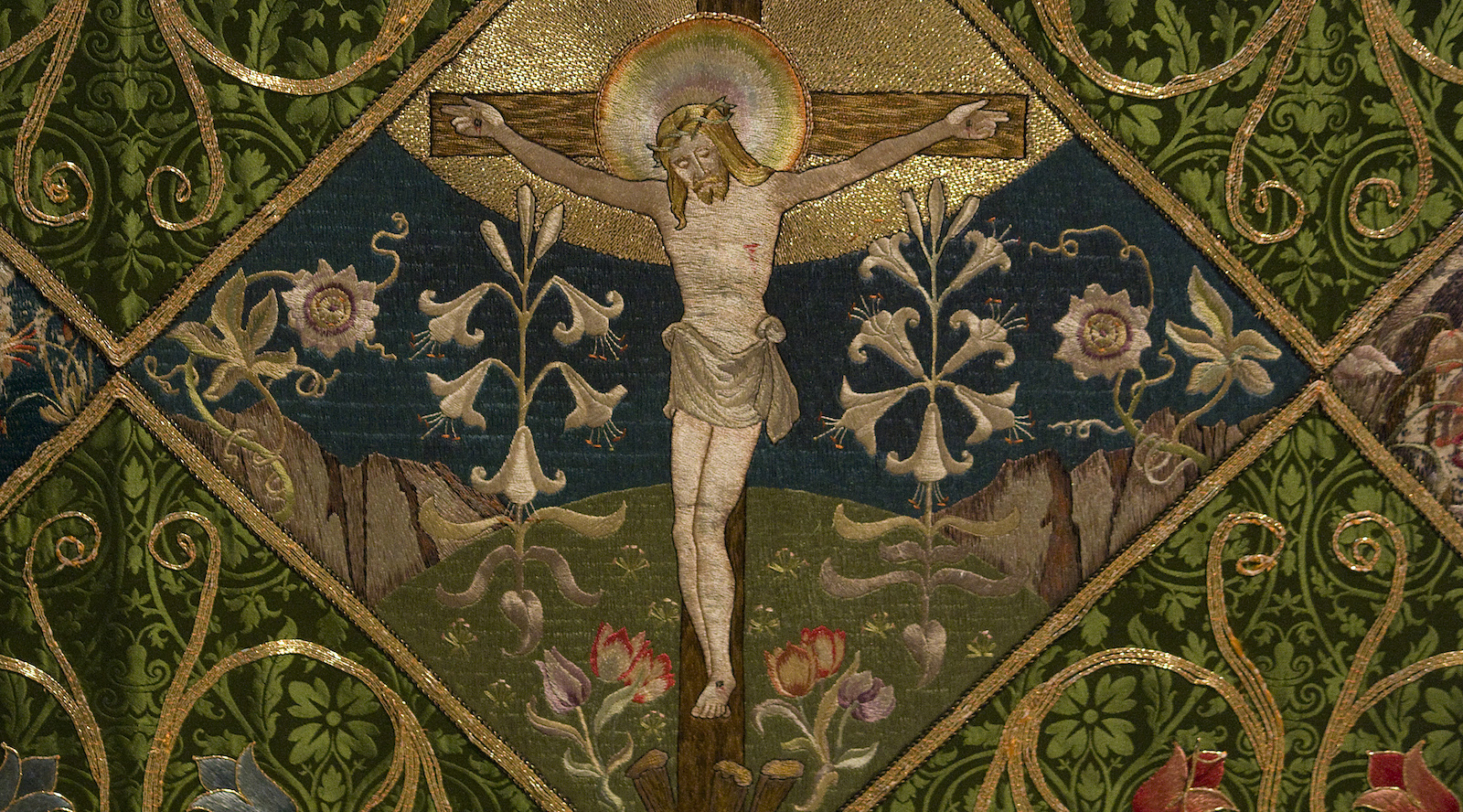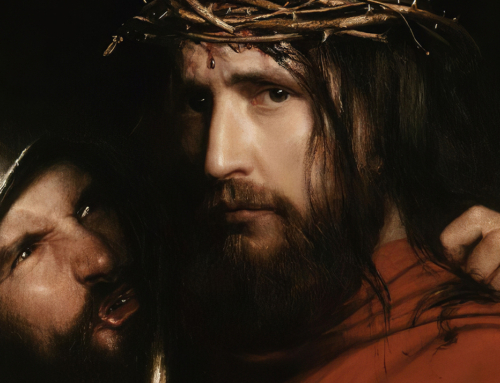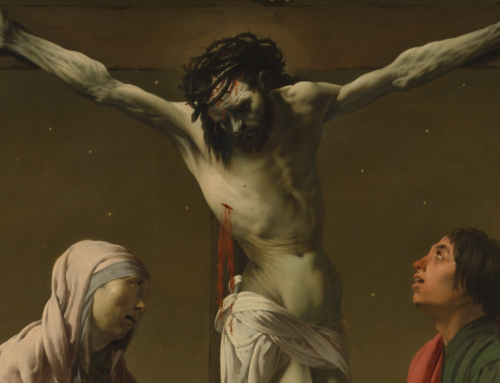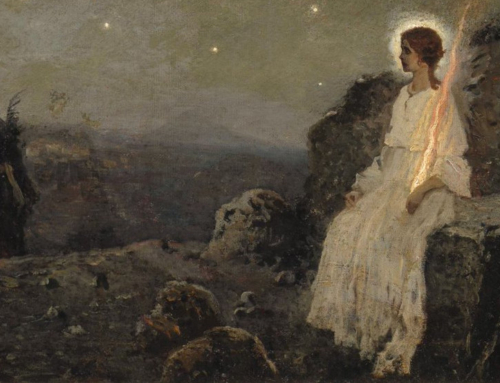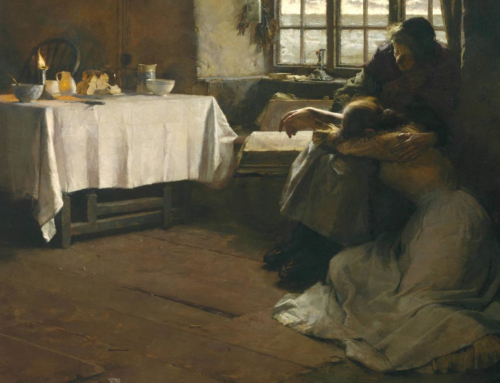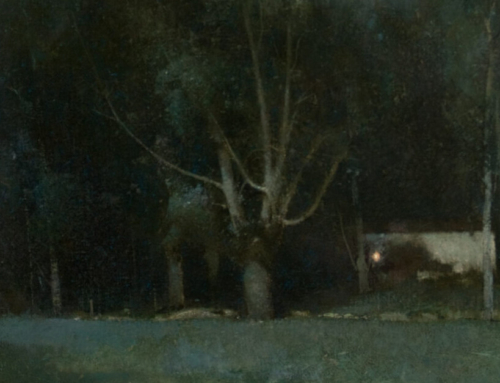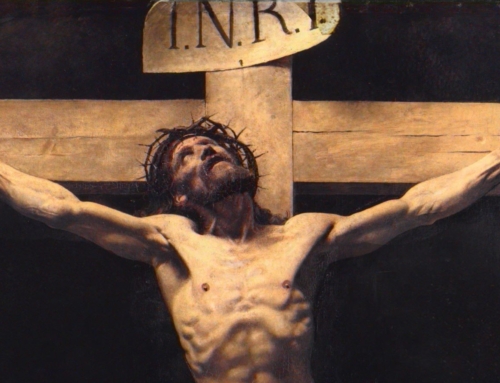I stood in an open field under a blue sky. The sun shone softly on the many wildflowers populating the field, and a light breeze caused the grass to sway rhythmically as if to a song. I delighted in the bright array of colors—white, yellow, orange, green, lavender—that seemed to dance before me in the field. I wandered aimlessly and was forgetful of time. At first, I felt only joy, but gradually I began to feel in my heart as though something was missing. An emptiness which the flowers, the sun, and the soft breeze could not yet seem to fill. I looked again around the field and I saw in the middle something tall and dark, which I had forgotten was there.
As I approached it, I saw that it was a tree, austere in its leafless limbs. It was not much taller than me but solid with arms outstretched as if for an embrace. As I ran my hands over the wood, I felt strength and firmness in its contours. Then I saw the holes, three wounds forever fixed in that wood. I stood, transfixed by the tree and the weight of its glory. At last, I looked down and saw a mound of gnarled roots, as one sees in trees that have lived long upon the earth. As I followed the roots, I saw that they spread out in every direction and that there was no plant, flower, or tree in that field that was not connected to this tree before me. I knelt down and, placing my hand upon the roots, I felt joy and pain and love and life coursing through me. And then I knew the tree, and I knew that nothing in the field would ever satisfy me without it.
***
The cross, as this scene imagines, can so easily fade into the background. During Lent, it was so prominent that we could hardly forget it, but during Easter, the festivities, small pleasures, and busyness of spring can cause the cross to slip from our minds. The approach of Ordinary time brings the cross back into view and is a reminder that the Christian life paradoxically holds together the suffering of Lent with the rejoicing of Easter.
The combination of joy and suffering is a paradox exemplified by the wounds that Christ continues to bear even after his resurrection (see John 20:27). It is a paradox that finds its fullest expression in the cross. Servant of God Luis María Martínez reflects that “there are in the Christian life many virtues and many gifts, many intimate communications with God, and a multitude of holy and heroic acts; but all of them are grouped around the cross, for they are the preparation or the consequence of the intimate, loving sacrifice” (The Sanctifier, 124).
Everything in the Christian life either points to the cross or flows from it. The cross does represent suffering, but it also represents the ultimate act of love, which won our salvation. The cross is the bridge by which we walk to heaven. From the cross flows joy and life. Not the joy and life that the world offers, but a new joy and new life in Christ. “Whoever loses his life for my sake will find it” (Matt 10:39).
So, as we transition into Ordinary time, look to the cross, which stands as our anchor. Look to the cross upon which we were redeemed by the Savior’s precious blood. Look to the cross for meaning, for joy, and for life: “See how the cross of the Lord stands revealed as the tree of life.” 1
✠
Photo by Fr. Lawrence Lew, O.P. (used with permission)
- Liturgy of the Hours, Ordinary Time, Sunday Week 1, Office of Readings, Antiphon 1.
↩︎

